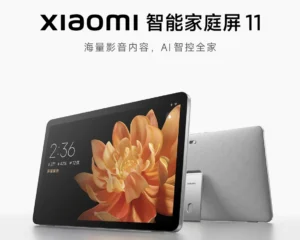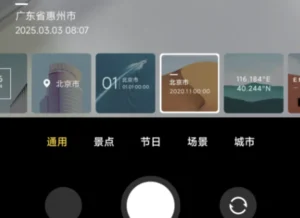Xiaomi’s Vision for Global Smartphone Dominance by 2025
Xiaomi, the innovative Chinese tech powerhouse, is on a mission to secure its position as the world’s leading smartphone manufacturer. This ambitious goal highlights the company’s rapid growth and forward-thinking global strategy. With a remarkable $28 billion earmarked for research and development (R&D) over the next decade, Xiaomi is not just concentrating on smartphones. The company is also branching out into home appliances and electric vehicles (EVs). In this article, we will delve into Xiaomi’s bold ambitions, its recent milestones, and the hurdles it must overcome to achieve its goal of dominating the global smartphone market.

Strategic Investments and Aspirations
Xiaomi’s CEO, Lei Jun, has been vocal about the company’s determination to take the lead in the global smartphone market within a few years. On May 25, 2025, he announced a comprehensive plan that includes not only smartphones but also a strong focus on appliances and EVs. This vision is underpinned by a staggering $28 billion investment in R&D over the next decade. Just days earlier, on May 19, he revealed a $6.9 billion (approximately €6.4 billion) commitment to develop high-end smartphone chips, aiming to lessen reliance on foreign suppliers like Qualcomm.
Recent posts on social media platform X reflect a growing enthusiasm around Xiaomi’s chip development initiatives. Users such as @WindInfoUS and @trtworld have highlighted the introduction of the new Xring O1 processor, a 3nm flagship chip designed to power premium devices like the Xiaomi 15S Pro. This strategic move toward in-house chip production is seen as a significant step toward achieving technological independence. Additionally, @AlvaApp noted that these custom chips will enhance device integration and AI capabilities, positioning Xiaomi for greater control over its ecosystem.
Impressive Growth Trajectory
Xiaomi has demonstrated remarkable growth in the global smartphone arena. By August 2024, the company surpassed Apple to become the second-largest smartphone brand worldwide, capturing a 14% market share, according to Counterpoint Research. Gizchina further reported that Xiaomi was the fastest-growing smartphone brand globally in 2024, achieving a 4% increase in sales. By November 2024, Xiaomi had a 15.6% market share in China, alongside a 5% year-on-year growth in Q4 2024, outperforming the global market, largely due to local subsidies.
Xiaomi consistently ranks among the top three smartphone manufacturers globally. As reported by XiaomiTime on January 13, 2025, the company maintained its third position worldwide, trailing only Samsung and Apple. In its home market, Xiaomi achieved a 21.7% growth in panel procurement in 2024, solidifying its status as the leading smartphone maker in China, as noted on January 9, 2025. Furthermore, Xiaomi has been making significant strides in emerging markets like Africa, with its growing influence and expanding product portfolio highlighted as early as 2023.
Expanding Beyond Smartphones
Xiaomi’s ambitions extend far beyond smartphones. The company is diversifying into electric vehicles and smart home ecosystems, aiming to establish an integrated tech empire. Reports from Gizmochina on May 25, 2025, indicate that Xiaomi has transformed from a smartphone manufacturer into a global tech leader, offering an array of devices, including smart TVs, security cameras, air purifiers, wearables, and robot vacuums. Its EV venture, the SU7, has already delivered over 27,000 units in China by August 2024, with a target of reaching 100,000 units by November 2024, according to Canalys.
Innovation is at the heart of Xiaomi’s strategy, particularly with its custom Android skin, HyperOS (formerly MIUI), which continues to evolve. The long-standing collaboration with Qualcomm has powered millions of Xiaomi devices, helping the company become the third-largest smartphone brand globally. However, the push for chip independence with the Xring O1 signals a shift towards self-reliance that could redefine Xiaomi’s competitive edge.
Navigating Challenges Ahead
Despite its impressive growth, Xiaomi faces formidable challenges. The global smartphone market remains fiercely competitive, with Samsung and Apple maintaining strong positions. Geopolitical tensions, especially in the U.S., where production relocation has been encouraged, could hinder Xiaomi’s expansion efforts. Additionally, domestic competitors like Huawei, Honor, and vivo present significant challenges, particularly in the foldable phone segment, where Xiaomi still trails behind Huawei.
Moreover, Xiaomi’s rapid diversification into EVs and other sectors may strain its resources. While the SU7 EV shows promise, the EV market is notoriously competitive, with high R&D costs and established players like Tesla. As noted by @TraduOfficial on X, Xiaomi’s new EV model aims to rival Tesla’s Model Y, but success in this arena is uncertain.
The Power of Localization and Community Engagement
Xiaomi’s global success can also be attributed to its effective localization strategies and robust community engagement. Accelingo highlighted that Xiaomi’s approach includes culturally relevant translations and marketing, ensuring its products resonate with diverse audiences. This strategy has been particularly successful in emerging markets like Thailand, where Xiaomi became the market leader by 2021.
The company boasts a vibrant community, with over 1 million monthly users on its MI platform, fostering direct customer interaction. This engagement, coupled with competitive pricing and a broad product range—from flagship devices like the Xiaomi 15 series to budget-friendly Redmi and Poco models—has helped Xiaomi cultivate a loyal customer base.
What Lies Ahead for Xiaomi?
Xiaomi’s trajectory positions it as a serious contender for the top spot in the global smartphone market. With a focus on innovation, affordability, and localization, alongside substantial R&D investments, Xiaomi is poised to be a formidable competitor. However, achieving global leadership will require navigating intense competition, geopolitical challenges, and the complexities of scaling its EV and chip development initiatives.
As Xiaomi continues to release updates for HyperOS (with Android 16 anticipated in June or July 2025) and expand its product ecosystem, its influence in the tech industry is undeniable. Whether it can surpass Samsung and Apple remains to be seen, but Xiaomi’s bold vision and strategic initiatives make it a brand to watch in 2025 and beyond.
Xiaomi global smartphone market leadership
Xiaomi is set to lead the global smartphone market by 2025, driven by innovation, localization, and strategic investments.
Xiaomi, smartphone, EVs, HyperOS, technology, market share






